Rat Attacks on Some Vegetables and Weekly Hydroponic Garden Condition Updates (22 - 29 August 2022)
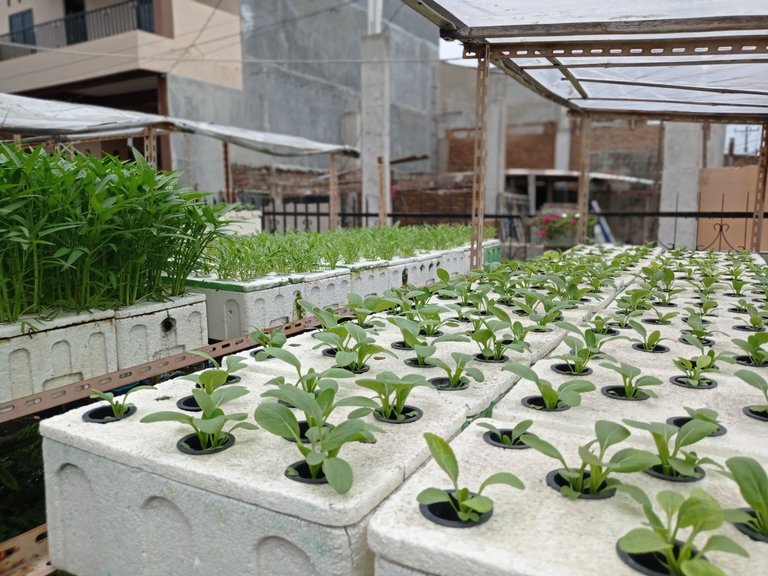
Hello everyone,
How are you today ? I pray and hope that all of us are always given health and happiness in carrying out all the routines in this life. I also believe that all members at HiveGarden Community are always enthusiastic and also think positively. Why can I be sure? every day in this community we can see various beautiful and lush gardens from various parts of the world, some gardening tips and many things that are informative and make us get new enthusiasm when we see it.
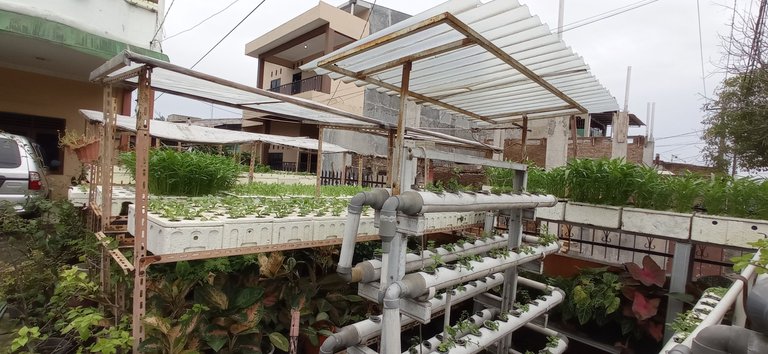
This time, I want to participate again in this community to share my weekly garden journal which I always do every week. I created this Garden Journal Weekly as a way for me to be consistent in gardening every week. I can also see how the progress of the vegetables that I grow and know more about what happens every week in my hydroponic garden. As friends know, I have a hydroponic garden with various types of vegetables that I grow.
Rat Attack in Hydroponic Garden
During my 6 years of growing vegetables with a hydroponic system, I not only got good harvests but also faced many challenges and problems. Various problems that often occur such as extreme weather conditions, not being alert and careful when checking water conditions in hydroponic installations, pest attacks, and also incorrect fertilizer application. All these problems I always try to overcome and also make me better in the future.
This week, my dad and I were surprised by several pots of pakchoy which were badly damaged, like being eaten by insects. My father thought, these vegetables were attacked by caterpillars and I felt, these vegetables were eaten and attacked by rats. Rat attacks often occur in hydroponic vegetables and sometimes have a severe and detrimental impact on farmers.
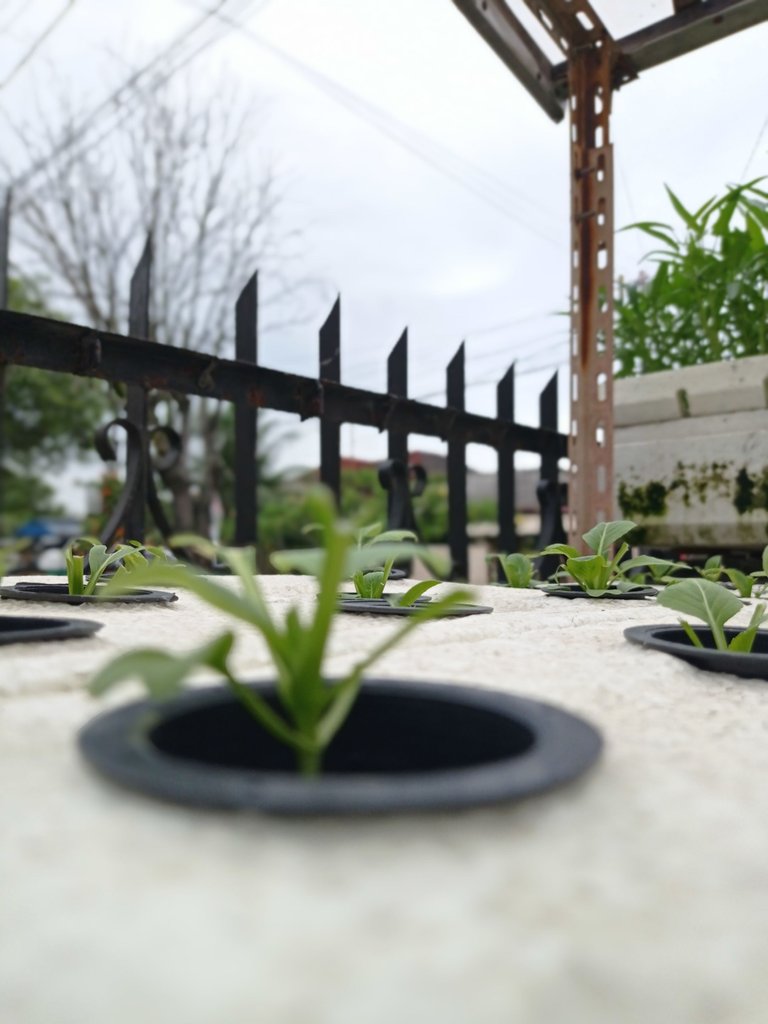
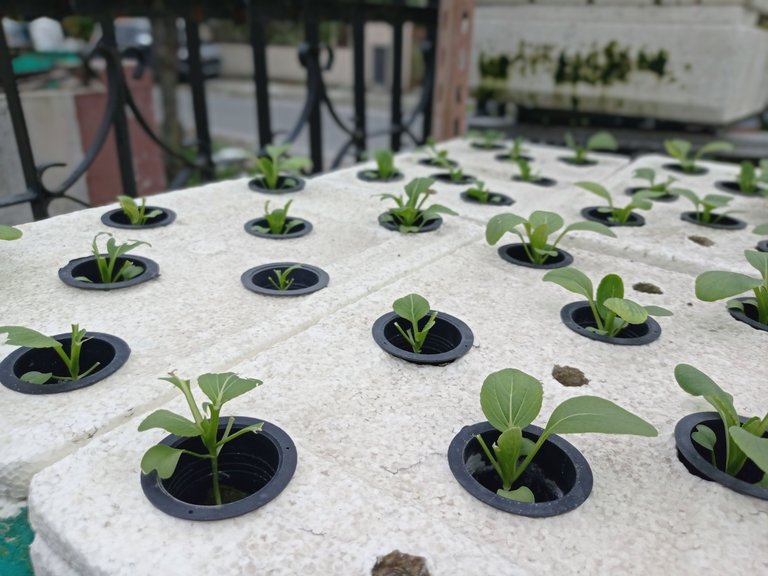
Usually, rats only attack or eat vegetables that are sweeter and crunchier than other vegetables. In my hydroponic garden this week, I have some vegetables, namely kangkong, pakchoy, lettuce, mint leave and also bitter mustard. Among the five vegetables, the mice chose to eat the very young pakchoys.
There are several ways to get rid of mice. One of them is by using rat pest control or rat poison. However, I can't choose that method, because I have a lot of domestic paint around my hydroponic garden. I'm afraid the cats will eat the wrong food and eat the rat poison and then die. The way I'm going to try this week, I'm going to buy some durian skins. My father said something that smelled extreme would repel rats.
The Development of Hydroponic Pakchoy
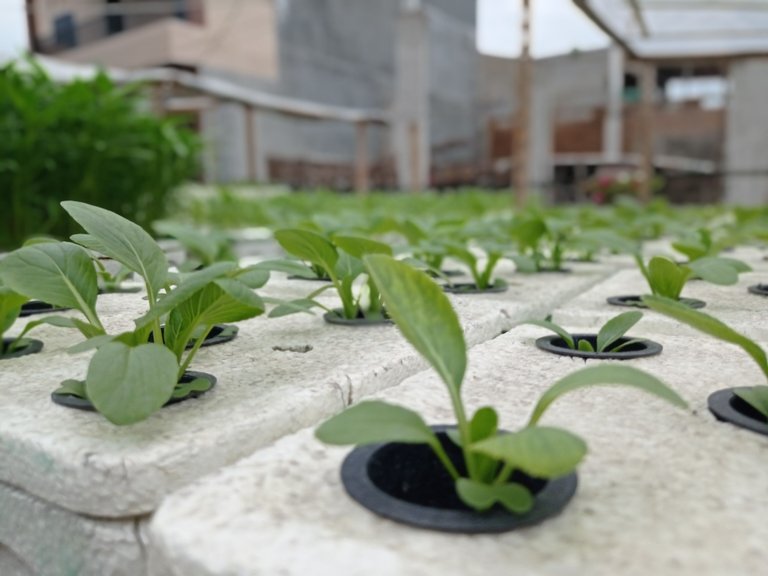
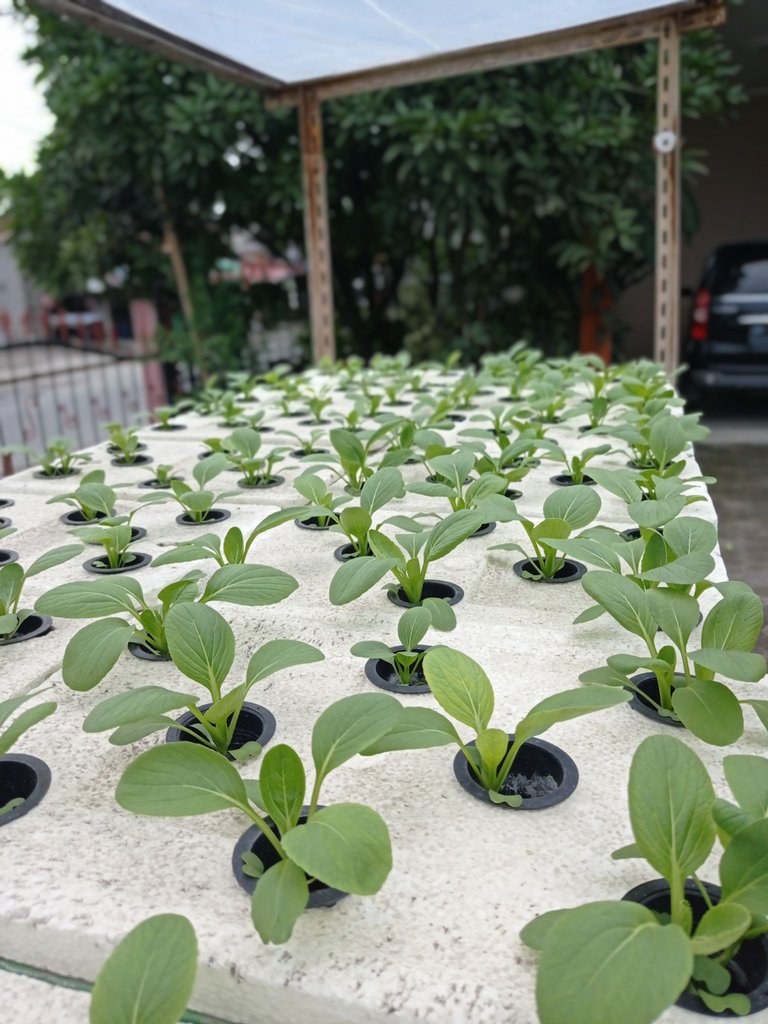
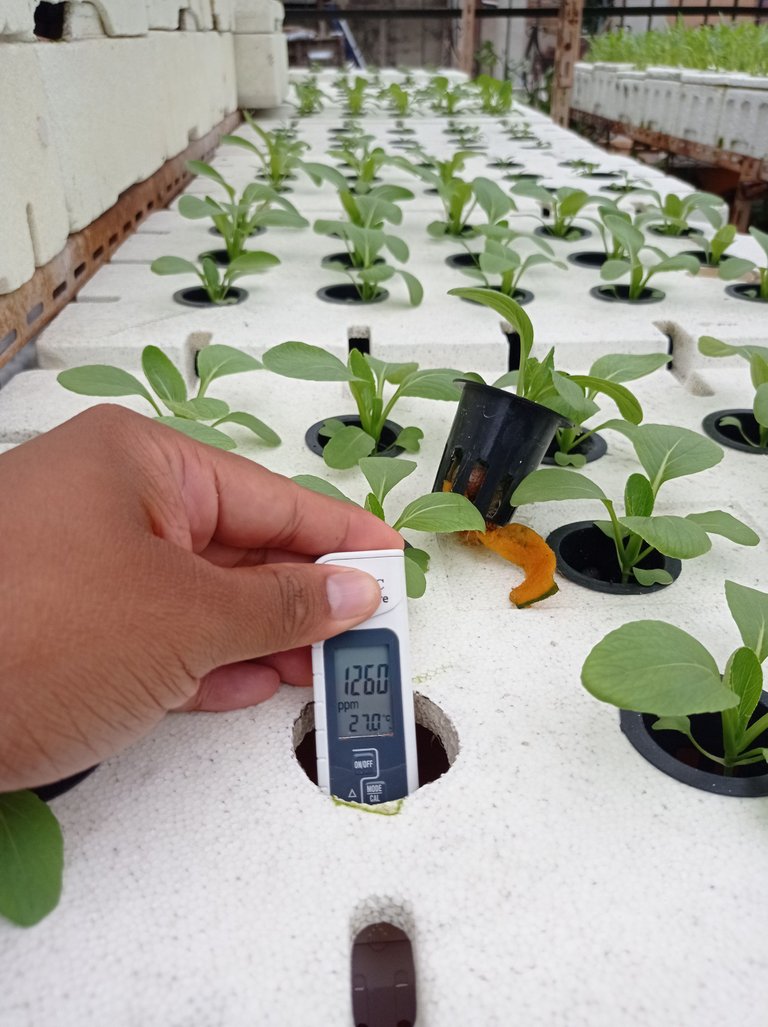
After seeing some damage to vegetables from rat attacks, I will then discuss the condition of my hydroponic garden. This week, I have two pakchoy with two different planting ages. First, pakchoy with the age of 17 days after sowing. This pakchoy grows very well and optimally, although there are some pakchoy pots that are damaged due to attacks from mice. For this planting period, I used pakchoy with a hydroponic liquid fertilizer concentration of around 1200-1300 ppm. This is still in accordance with the standard of ppm pakchoy needs around 1000-1400 ppm.
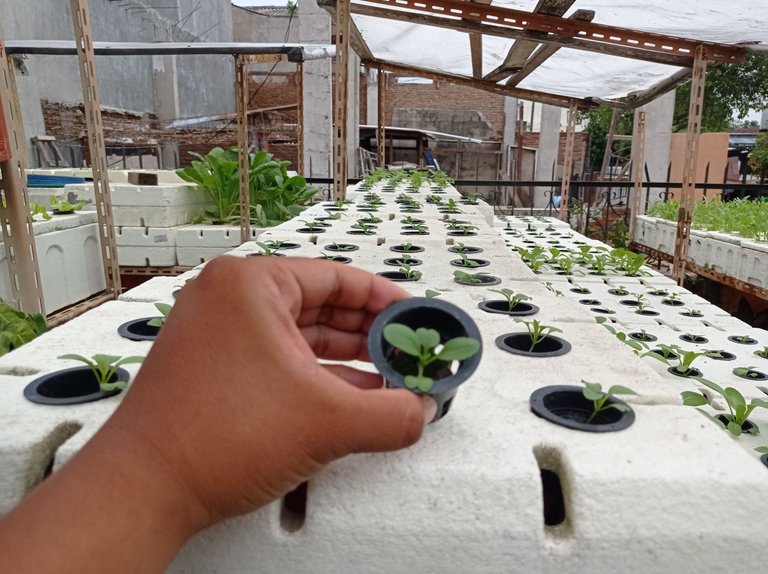
In addition, I also have a pachoy that I just moved to my hydroponic media. This pakchoy has a planting age of about 10 days after sowing. I transfer these pakchoy seeds in the morning or in the afternoon, because to avoid hot weather that can make the pakchoy experience heat stress.
This Pakchoy grows well and optimally. Growth is also uniform and not too much of a problem. However, I'm worried that if the pakchoy leaves grow bigger, there will be rat attacks on the leaves later. It seems, I have to do the extermination as soon as possible.
Hydroponic Kangkong Condition
We meet with kangkong again. Kangkong is a water vegetable that is a favorite of East and Southeast Asians. Kangkong is easy to grow, cultivate and sometimes grows alone in ponds or swamps. This vegetable has a lot of nutritional value needed by the body, it is also very delicious, and most importantly easy to cook. However, kangkong that is sold in the market or planted has a weakness, if it is not checked carefully several times it will worm or swell on the inside of the kangkong. Kangkong grown with a hydroponic system is considered cleaner and there are almost no cases of insects or other objects in the kangkong trunk.


This week, I moved about 200 pots of kangkong seeds that I had sown into hydroponic media. I used liquid fertilizer with a concentration of about 1100 ppm in this planting period. Everything looks very fertile and also grows optimally. The hydroponic kangkong that I grow is a best seller product from our hydroponic garden.
Hydroponic Lettuce Condition
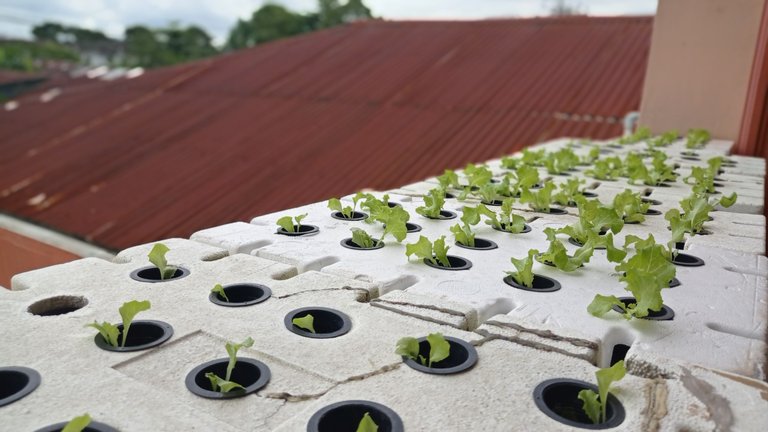
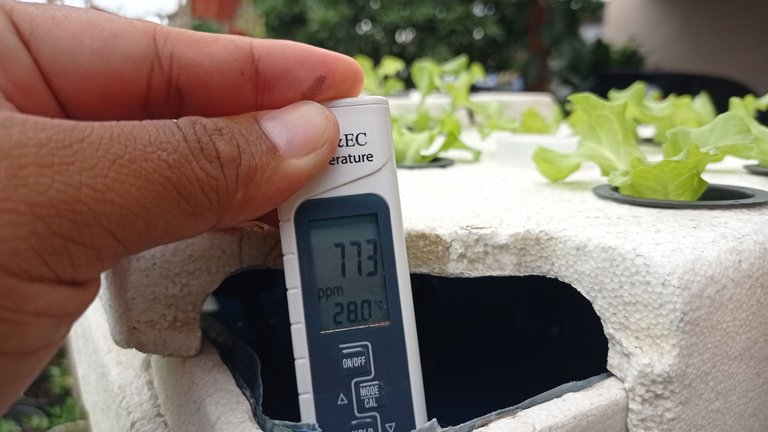
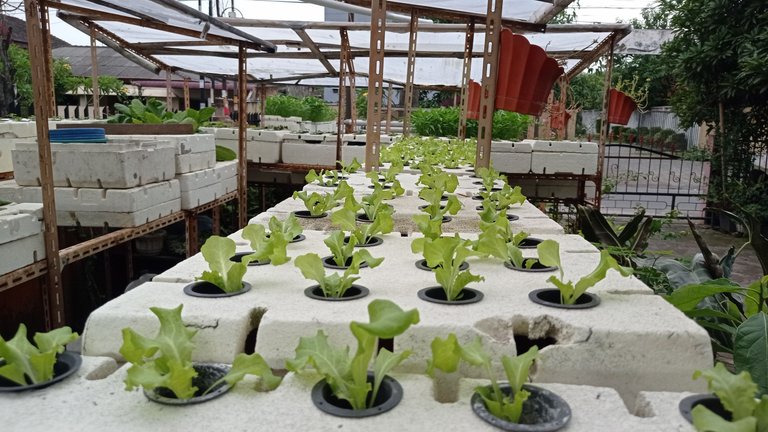
This time, I want to discuss the lettuce that I grow hydroponically. I have 150 pots of lettuce with a planting age of 17 days after sowing. All these lettuces grow very well and the growth of the vegetables is also uniform. This indicates that all plans and executions have gone well. I used liquid fertilizer with a concentration of 700-800 ppm for this planting period.
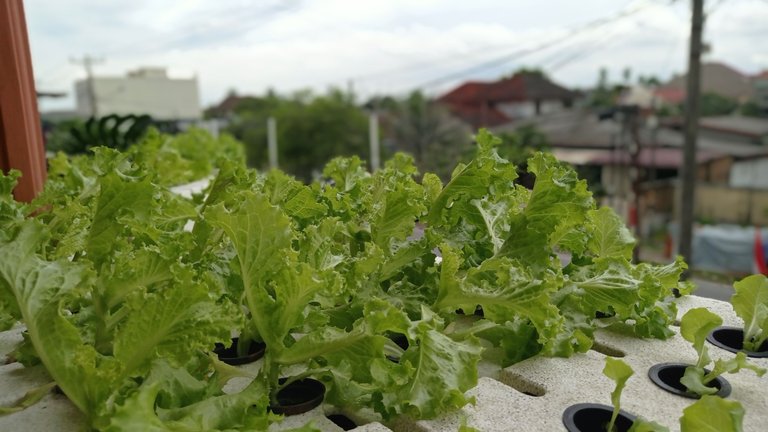
In addition, I also have a salad with a planting age of about 28 days after seeding about 80 pots. The lettuce is growing well and optimally, it should be ready to be harvested next week. This lettuce is a type of vegetable that is a little strange, because even though it is large in shape, it is still very light. Many people also grow lettuce in hydroponic installations because of its very beautiful shape.
Bitter Mustard Conditions in Vertical Hydroponics
One more problem came in my hydroponic garden. The bitter mustard that I planted in the vertical hydroponic installation experienced a change in color. The green color of the mustard leaves turns yellowish which worries me. After I checked, it turns out that this vegetable lacks nutrients, which is indicated by the ppm concentration in the water tank, which is only around 600 ppm. I immediately added hydroponic liquid fertilizer and returned the concentration of the solution in the water reservoir to 1100 ppm.
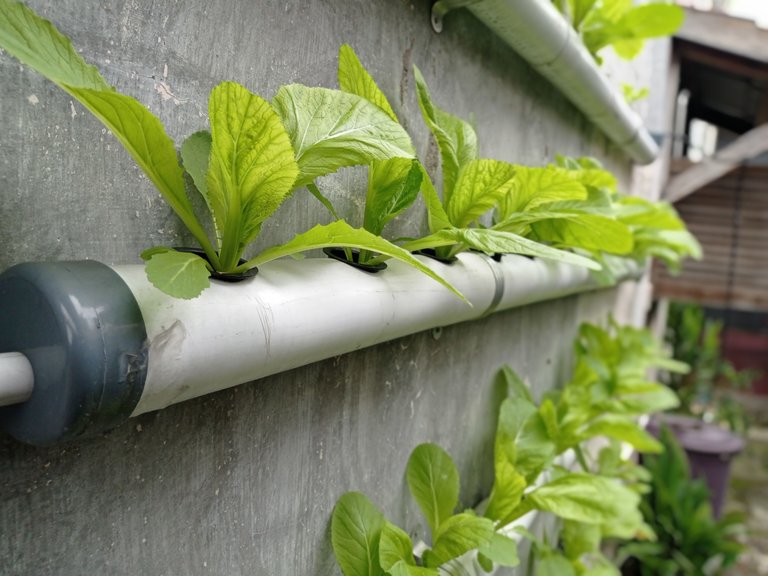
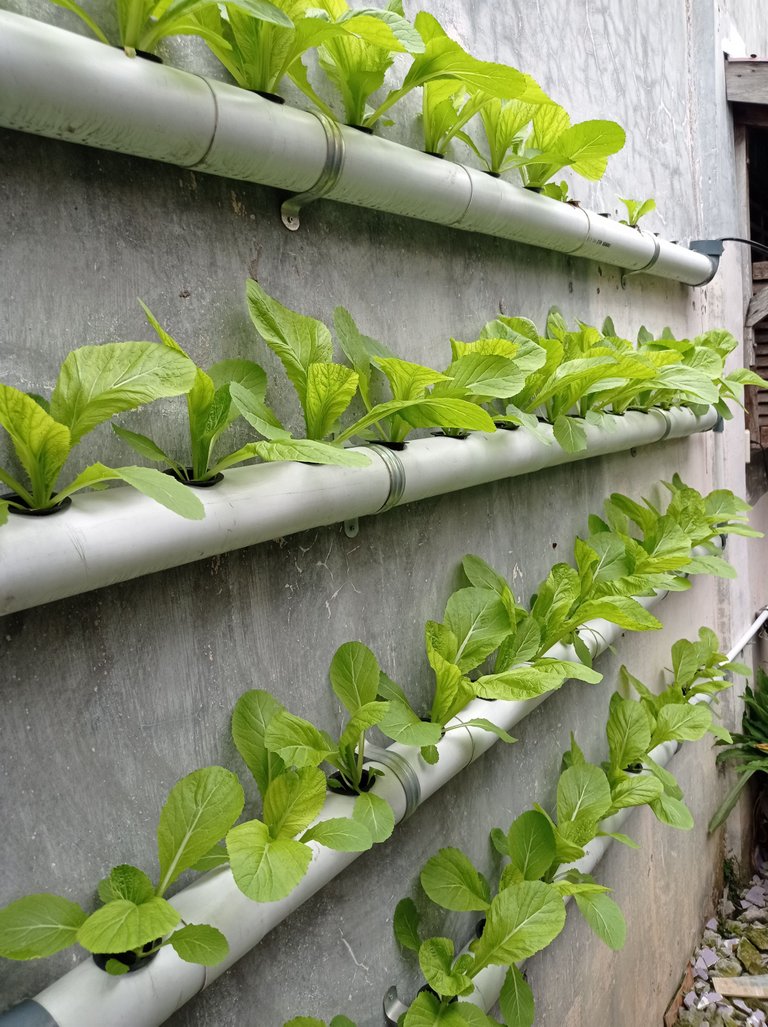
One of the obstacles in the vertical hydroponic system is the limited intensity of sunlight. Moreover, if sun exposure is also increasingly limited due to tall buildings. As a result, hydroponic vegetable growth takes longer to harvest.
Okay, this is my garden journal this time. See you next week, and keep the spirits up in your gardens.

Call me Isdarmady, because I have a full name that is very long, namely Isdarmady Syahputra Ritonga. I am a head of the family who work as Farmers Vegetables Hydroponic and Consultant Hydroponics, sometimes I also sell coffee from various regions in Indonesia.
I have expertise dispensing coffee with a variety of techniques and tools brewing, because I have the desire to make a coffee shop with hydroponics as centerpieces. Help me realize that dream.
Thanks for read, vote, re-blog and support me in Hive. Maybe god will reward the kindness, let’s success together.
Your content has been voted as a part of Encouragement program. Keep up the good work!
Use Ecency daily to boost your growth on platform!
Support Ecency
Vote for new Proposal
Delegate HP and earn more
what is it that you're actually measuring when you measure your ppm?
hello @ligayagardener thank you for stopping by
This is a question that I know the answer to but it is difficult for me to put the words into one sentence. But something like this, normal water or water from a well has a solution concentration of around 0-150 ppm, and vegetables such as pakchoy and kangkong require a concentration of 1000-1400 ppm to can grow and develop. Hydroponic liquid fertilizer is used to calibrate the concentration of the solution in the media. Something like that, sorry if I can't explain in detail, because I'm just a self-taught learner and a beginner.
Thanks. That's good info that I can apply!
I really admire your skill in gardening like that. I hope there will be a budget so I can do the same gardening method as yours soon @isdarmady 🥰. Have a good day!
hello @luckylaica thank you for stopping by
you can start with small things first, I think it doesn't need too much capital to make a hydroponic set.
Right, but I think I'm not ready yet. I'll let you know if I can start it soon. Have a good day!
Hidroponiknya keren kak, saya juga nanam sawi pada sompel2, baru tau kalau tikus bisa jadi salah 1 penyebabnya, terima kasih infonya kak
Oh iya kak, postinganmu telah dikurasi secara manual oleh tim Indonesianhiver sebagai postingan kelompok temuan kurator. Saat ini kami sedang membangun proyek kurasi lintas komunitas utk membantu berkembangnya blogger Indonesia.
Kami harap kakak mau bergabung agar nilai kurasi untuk Kakak dan blogger indonesia lainnya semakin besar :)
hello, terima kasih sudah berkunjung
selain tikus, kemungkinan besar itu juga bisa karena ulat. Kita perlu mengeceknya terlebih dahulu, hal yang paling penting terus semangat menanam dan konsisten.